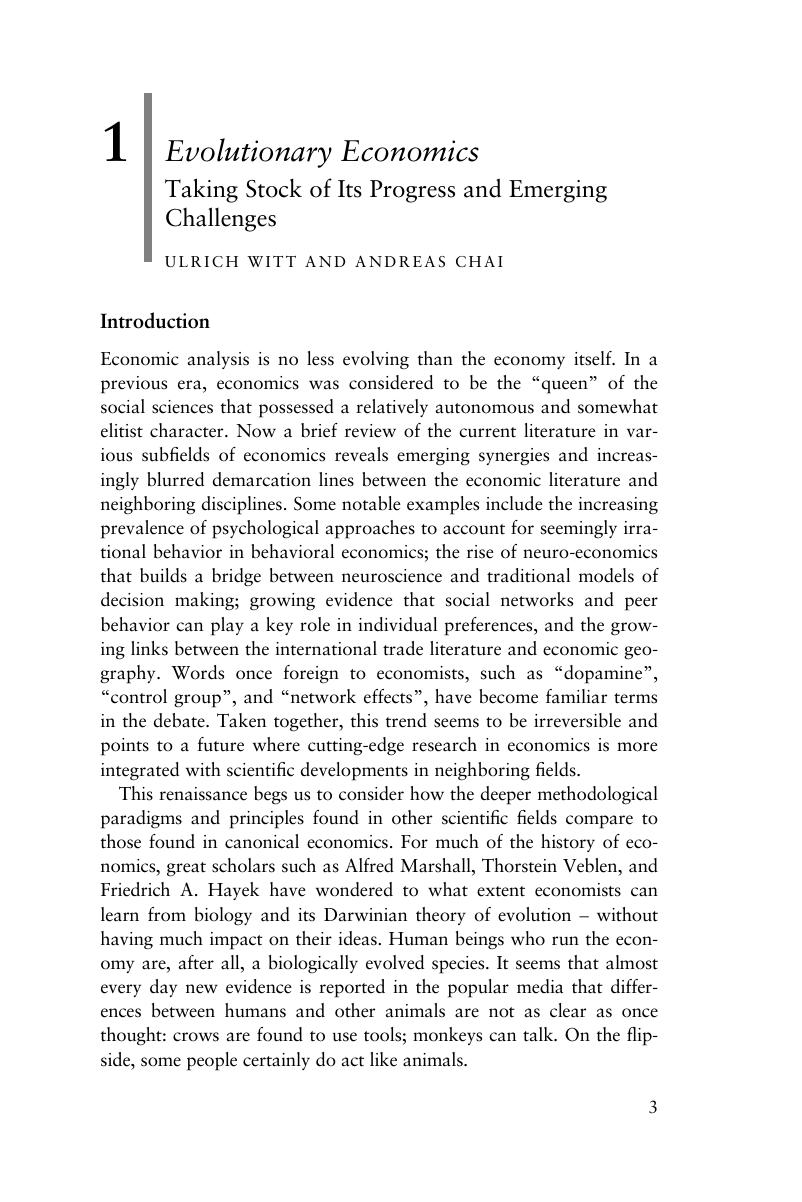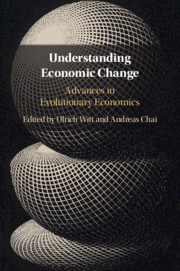Book contents
- Understanding Economic Change
- Understanding Economic Change
- Copyright page
- Contents
- Figures
- Tables
- Contributors
- Part I Introduction
- 1 Evolutionary Economics
- Part II Conceptual and Methodological Problems
- Part III Perspectives on Evolutionary Macroeconomics
- Part IV Advances in Explaining and Assessing Institutional Evolution
- Part V Evolutionary Perspectives on Welfare and Sustainability
- Index
- References
1 - Evolutionary Economics
Taking Stock of Its Progress and Emerging Challenges
from Part I - Introduction
Published online by Cambridge University Press: 10 November 2018
- Understanding Economic Change
- Understanding Economic Change
- Copyright page
- Contents
- Figures
- Tables
- Contributors
- Part I Introduction
- 1 Evolutionary Economics
- Part II Conceptual and Methodological Problems
- Part III Perspectives on Evolutionary Macroeconomics
- Part IV Advances in Explaining and Assessing Institutional Evolution
- Part V Evolutionary Perspectives on Welfare and Sustainability
- Index
- References
Summary

- Type
- Chapter
- Information
- Understanding Economic ChangeAdvances in Evolutionary Economics, pp. 3 - 40Publisher: Cambridge University PressPrint publication year: 2018
References
- 1
- Cited by



